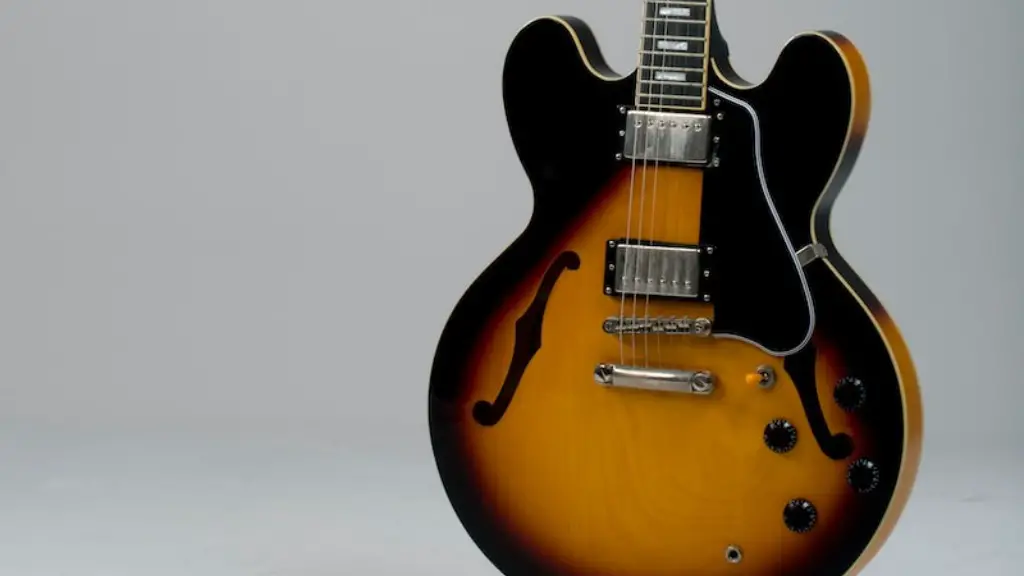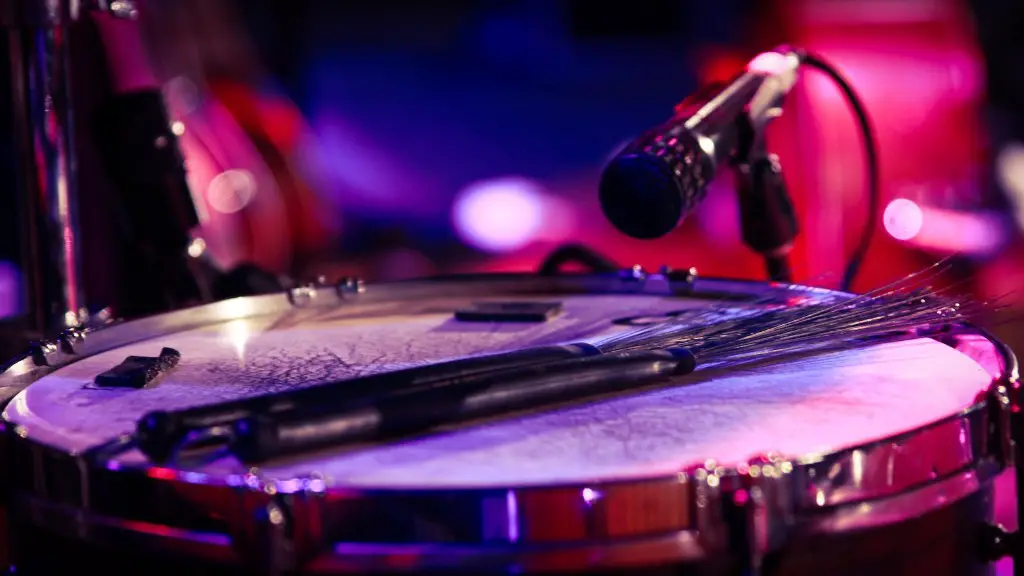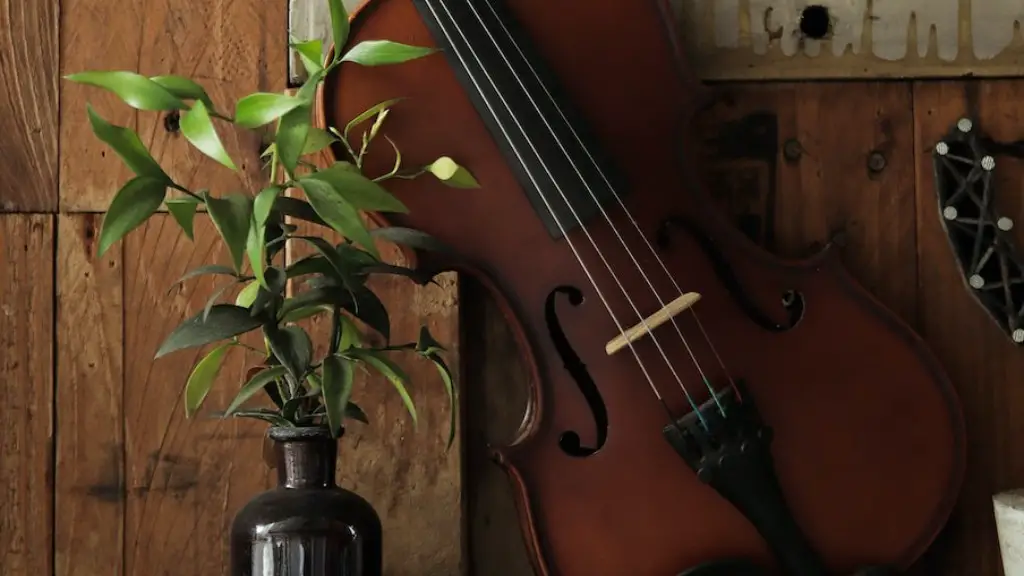When it comes to giving your electric guitar a facelift, it’s important to use the right type of paint. An electric guitar can be an expensive investment and using the wrong type of paint can leave you with a subpar result.
The type of paint you select will depend on a few factors. It is important to consider the material your guitar is made from and what kind of finish you are looking for. You may also want to consider the environmental conditions you will be playing in, as this can affect your choice of paint as well.
It is recommended that polyurethane or acrylic enamel paints are used for electric guitars, as they are durable and will provide a glossy finish. These paints are also easy to apply and come in a variety of colors.
It’s important to read the instructions carefully before starting your project, as different types of paints require different preparation methods. Taking these steps will help ensure that you get the perfect look for your guitar. Be sure to apply several thin coats rather than one thick coat.
Preparation Before Painting an Electric Guitar
Painting an electric guitar is a great way to customize it and make it your own. Before you get started, it’s important to know what type of paint to use and how to properly prepare the guitar for painting. For best results, you should use a high-quality acrylic paint, as this type of paint is designed specifically for use on guitars. It’s also important to clean the guitar thoroughly before painting, as any dirt left on the surface can affect the finish. Sanding the body of the guitar is also recommended, as this will help create a better bond between the paint and the guitar body. Finally, be sure to apply a primer coat before painting in order to create a smooth base for your color coat. This will help prevent any chipping or bubbling of your final coat.
Once you’ve prepped your electric guitar properly and selected the right type of paint, you can begin painting and creating your own unique design!
Popular Acrylic Paints For Electric Guitars
When it comes to painting an electric guitar, there are several options available. Acrylic paints are a popular choice as they can be used on wood, metal, and plastic surfaces. They are also relatively easy to use and come in a variety of colors and styles. Acrylic paints provide a glossy finish and dry quickly, making them ideal for electric guitars. You can also mix colors to create custom colors or mix with other mediums such as lacquer or enamel for more intricate designs. When choosing an acrylic paint for an electric guitar, make sure you select a paint specifically designed for the material it will be applied to. It is also important to consider the type of finish you want before selecting your paint. Many acrylic paints are water-soluble and easy to clean up with soap and water. With the right preparation and care, you can create stunning designs on your electric guitar with acrylic paints!
Choosing Paint For Your Electric Guitar
When looking to paint your electric guitar, there are a few important considerations to keep in mind. First, you’ll want to choose a paint that will adhere well to the wood and other materials of the guitar. It should also be durable enough to stand up against wear and tear. Additionally, you’ll want to select a paint that won’t chip or flake off easily. Finally, pay attention to the type of finish you’re going for and make sure the paint you choose is compatible with that finish. Urethane-based paints are often used for electric guitars as they provide a durable and glossy finish.
It’s always best to use high-quality paints when painting your electric guitar, as this will help ensure a professional looking result. When applying the paint, be sure to follow all directions carefully and allow plenty of time for drying between coats. To get an even better result, consider using a lacquer or clear coat over the painted surface for extra protection from wear and tear.
Applying Paint to an Electric Guitar
Painting an electric guitar can be a great way to customize its look and make it stand out. However, it’s important to use the right type of paint so that it adheres properly and looks great. For best results, use a high-quality acrylic enamel paint specifically designed for metal surfaces. This type of paint is durable, comes in a variety of colors, and is easy to apply.
Start by cleaning the guitar to remove any dust or dirt from the surface. Then lightly sand the area you intend to paint with fine-grit sandpaper and wipe away any debris. Apply a few coats of primer and allow each coat to dry completely before moving on to the next one. Once the primer has dried completely, you can begin painting your guitar with the acrylic enamel paint. It’s important not to rush this step since multiple coats will be needed for a professional finish. Allow adequate drying time between each layer of paint.
Finally, seal your work with a quality clear coat for extra protection and shine. With some patience and attention to detail you’ll have an eye-catching electric guitar that will be sure to turn heads!
Steps to Take After Painting Your Electric Guitar
Painting your electric guitar is a great way to customize it and make it unique. However, there are some important steps to take after painting your guitar to ensure that the paint job lasts and looks great. Firstly, you should always use paints specifically designed for use on electric guitars. These paints are specifically formulated to resist wear and tear, while also providing a great finish. Secondly, be sure to let the paint cure completely before attempting to play the guitar or restring it. This can take up to several days, depending on the type of paint used. Finally, applying a clear coat of lacquer or varnish can help protect the paint job and make it last longer.
Taking these simple steps after painting your electric guitar will ensure that you get the most out of your custom paint job for years to come!
Types of Primer for Use on an Electric Guitar
When it comes to painting an electric guitar, you must use the right type of primer. Primer is essential for ensuring that the paint adheres properly and that it lasts for a long time. The most common type of primer used on electric guitars is a catalyzed lacquer primer, which is designed to provide a strong bond between the paint and the guitar’s body. This type of primer is particularly good for creating a smooth surface, perfect for painting an even and crisp design on your guitar. Another option is an acrylic-based primer, which is slightly less expensive but also provides excellent adhesion and protection. Additionally, some guitarists prefer to use polyurethane-based primers, which offer superior durability and moisture resistance. Whichever type of primer you choose, make sure it’s designed specifically for use on electric guitars!
No matter what type of primer you use, make sure to prepare the surface properly before applying it in order to get the best results. This includes sanding down any rough spots or imperfections in the wood and cleaning off any dust or debris from previous coats of paint. With proper preparation and the right type of primer, you can create a beautiful finish on your electric guitar that will last for years to come!
Final Words
In conclusion, there is no one-size-fits-all answer to the question “what type of paint should I use on my electric guitar?” As with any type of painting project, it all depends on your budget, skill level, and what kind of look you’re trying to achieve. Some people prefer to use spray paint for a quick and easy job, while others prefer to take their time with brush-on or airbrush paint for a more professional finish. Whatever you choose, just make sure you take the time to properly prepare the guitar before painting. Taking the time to do it right can make all the difference in the final result.




